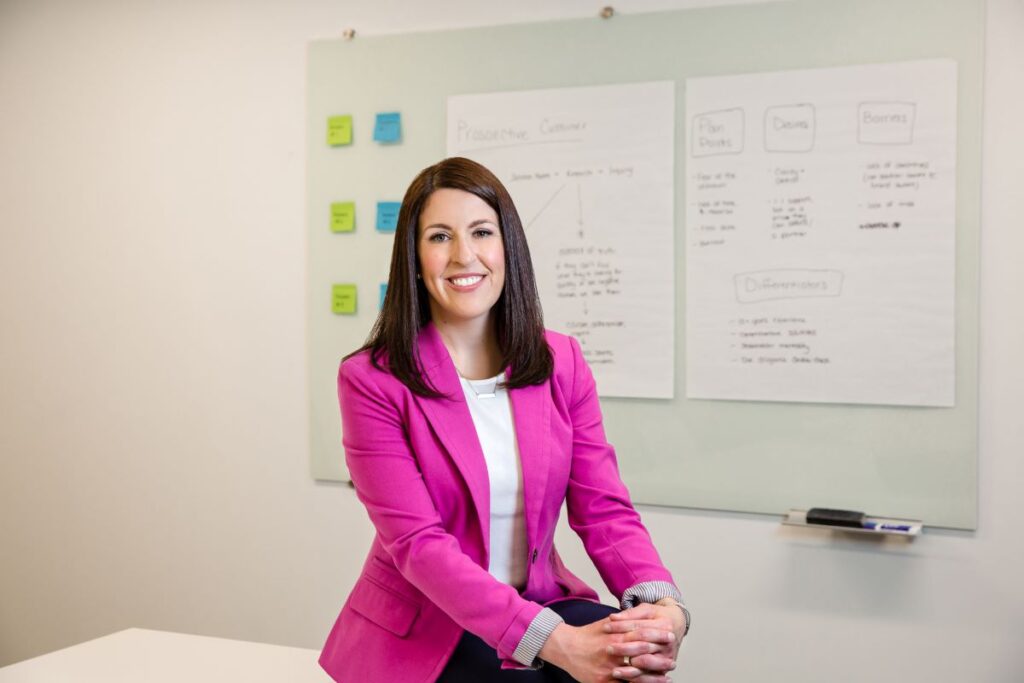How I Manage Money: at Home, part 3 (Profit First)
Hello! If you’ve been following along for the past few weeks, you know that I’m sharing how Dave and I manage our money at home. I did warn you that we have an, um… detail-oriented process. But the nice thing is that if you’re someone who likes to stay out of the weeds, you could take parts 1, 2, or 3 and do any of them standalone. You don’t have to be as intense as we are, haha.
The other thing you should know about today’s post is that we do use Profit First in our home life, and it’s been really useful (Dave loves it). And this is also what we’ve used to manage Ellevated Outcomes’ finances for the past couple years, and it’s been a game. changer. This structure creates a TON of freedom and headspace.

We often move clients to the Profit First model in years two or three of working together (typically there are other strategy adjustments that will have more impact in our early days together). But here’s the other thing that makes this model important and powerful: for a small business owner or a solopreneur who wants to grow their business, this financial structure tangibly helps them shift from an owner-operator mindset to taking on the true owner role.
But like I said, this system can help in business and in life. So here’s your step 3 to managing money (at home or work)…
3. Step up a real-time cash management system, like Profit First.
So, what do I mean? By “cash management” I mean how do you literally move your money? This isn’t the same as accounting (and frankly, it may take your accountant or financial advisor a little while to understand what you’re doing if you adopt this system). This sits alongside your accounting; it’s simply day to day management of your cash, using multiple bank accounts. The idea of Profit First is this: we no longer define profit in the age-old P&L way, where profit = leftovers after you remove expenses. Instead, you put aside profit first and then structure everything else around it. Then, on a quarterly basis, you, the owner pay yourself a bonus from this profit (or you share with employees, like we do).
Whether you’re using this in business or life, the principles are the same, but the setup looks a liiiiiittle different. So to continue our money management flow, let me walk you through how we use it at home.
Last week, I told you that our household category targets are:
- Living expenses: 38%
- Discretionary expenses: 34%
- Savings & charitable contributions: 28%
So this system involves having lots of bank accounts in lieu of complex Excel sheets. We have eight personal bank accounts (our banker loves us :)). Our accounts are called:
- Income
- Living expenses – 38%
- Discretionary expenses – 34%
- Tax – 6%
- Profit – 22%
- Emergency
- Education
- Dream home
Each pay period our salaries and Airbnb income are automatically deposited into our Income account. (Dave has a traditional W-2 job, and I earn a set salary from Ellevated Outcomes).
Then, on the 10th and 25th of each month, we empty out our Income account, distributing our target percentages to Living, Discretionary, Tax, and Profit. And as a reminder, we know what these targets should be because three weeks ago, we analyzed the past six months of numbers.
Then, as expenses come up, they’re paid directly from each appropriate account. For example, travel comes and eating out are paid from of our Discretionary account. The mortgage, groceries, and Dax expenses are paid from Living.
Here’s where the real fun comes in though…
You’ll notice that we put 22% of our income into our personal Profit account. After the end of each quarter – gotta love it when you and your partner agree on operating your home on fiscal calendar – we distribute our profit amongst our various savings accounts (for us these are Emergency, Education, and Dream Home). Your emergency funds will be the first thing you’ll want to fund, so that should be top priority. Fortunately, we have that funded to six months, so we’re now able to allocate our profit in ways that are for “fun savings.”
Each quarter we start our profit distributions by taking 10% off the top and sending that to a non-profit (last week I mentioned systematizing a consistent way to give back, and this is how we do it in our family). Then, we take what’s left and distribute it to other projects we’re saving for. For example, we’re both nerds, and we take turns, each doing more graduate work (luckily, Dave’s up for the next two years, ha). So we take 45% of what’s left in our Profit account and move it to Education each quarter. Then we take the 55% remaining and move it to Dream Home, as we save up for future house works.
Easy, right? jk, I know that was alot. As with anything, the setup is time-consuming, but once you have the system rolling, it makes everything so clear and simple.
Next Steps
1. Read Profit First. It’s a fast, simple read and provides tons of context and color for the quick outline I provided here. Chapter 10 focuses on applying the process to one’s personal life.
2. Ensure that your bank doesn’t charge for multiple accounts / minimum balances (so old fashioned but Bank of America, for example, is a major offender of this). If they do, try to negotiate them away. Also, it’s generally table-stakes by now, but also ensure that you can move money around online. The book advises against this, but IMHO that advice is a little outdated.
3. Set up at least 5 bank accounts: Income, Living expenses, Discretionary expenses, Profit, and Emergency savings. You may or may not need Tax (ours is to pay property and Airbnb taxes and capital gains). And then once you’ve funded Emergency savings to six months of expenses, add one or two fun savings accounts. Your money will flow from your profit account to those. Also, when you set up and name these accounts, I’d suggest that you name them with these descriptions; and in the description include the target %. So for example, if you look in our bank portal, our account names are literally, “Discretionary Expenses – 34%,” etc. This will simply make things easier on you in step 5.
4. Hook up your payments to each account. We directly deposit our salaries into Income; the Living account pays the mortgage; Discretionary pays the credit card, etc. Realistically, you’ll probably have to cycle through this flow for a couple months to catch everything. I’d suggest that you keep notes on what you’re doing because you will forget and get confused (not speaking from experience or anything…).
5. Set a reminder in your calendar for the 10th and 25th of each month; then, set a separate reminder for the first week after a quarter closes (1st weeks of April, July, October, and January).
On the 10th and 25th, empty Income, and distribute your designated percentages to your other accounts. When you distribute to Profit, hold the money in that account. It will accumulate for three months. Then, the first week after quarter close, you’ll distribute it to those things you’re saving for: Emergency, then other fun future goals.
And hopefully and importantly, you’ll join me in using your profit to help others first and then have your fun 🙂


